Intel X38 Tango - Is High FSB Overclocking Worth It?
by Rajinder Gill on February 26, 2008 3:30 AM EST- Posted in
- CPUs
Judges Scores for the E8500 Quickstep
Crysis
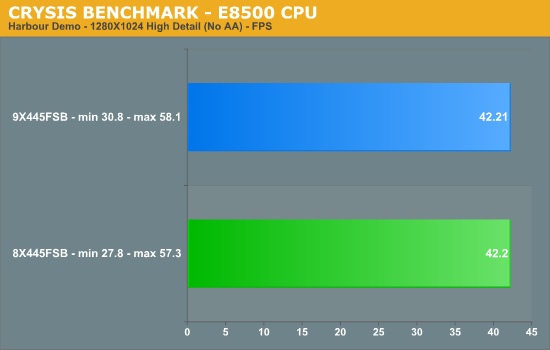
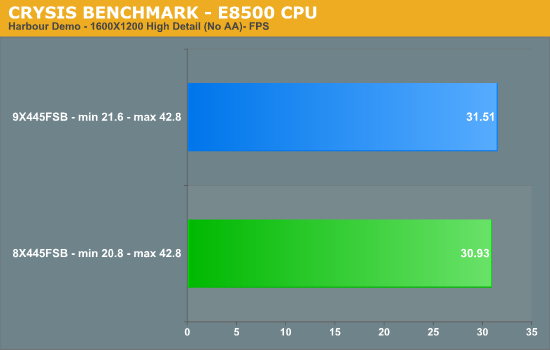
Unreal Tournament 3
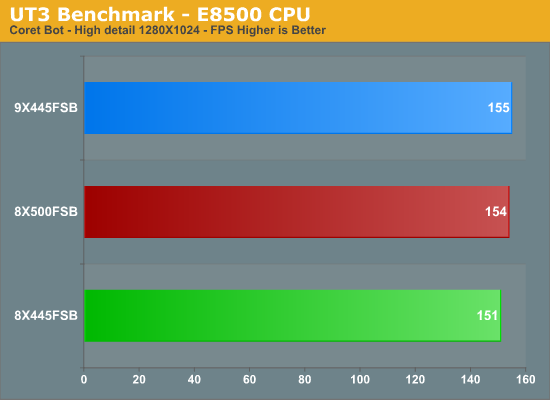
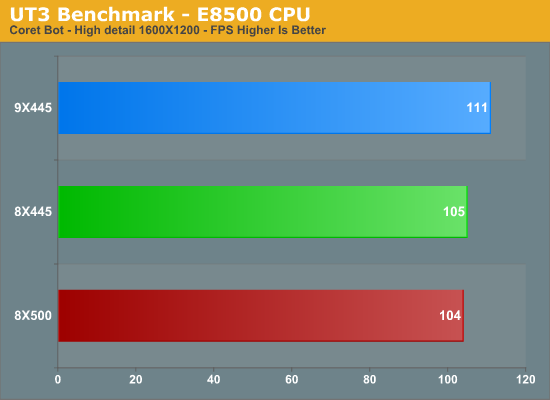
Cinebench 10
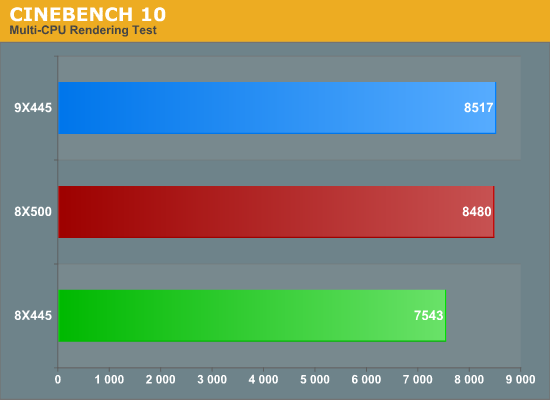
WinRAR 3.70
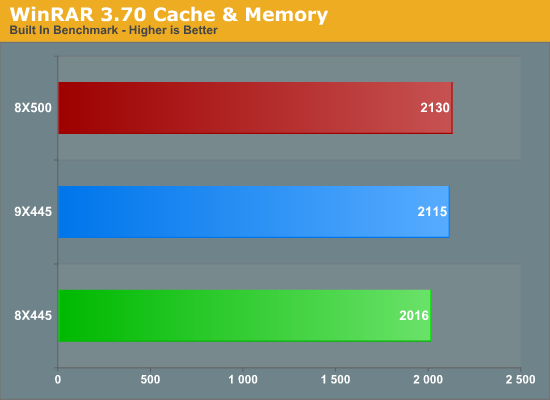
In the Crysis test, full stability is not achievable at 500FSB using the 8x multiplier, and we barely could finish benchmarks at the 7x multiplier. We tried a number of methods to get beyond this issue including Clock Twister adjustments, 2N memory speeds, and even an increase in CAS Latency and memory sub-timing adjustments. All of our endeavors failed; even with reduced performance levels we still had system instability.
This may be due to the rather coarse GTL adjustments offered by the Maximus Extreme, but more likely the problem is that Crysis is a very unforgiving benchmark at high FSB/Multiplier speeds. Therefore, a 45nm processor with anything less than an 8.5 multiplier is going to struggle in achieving 4GHz stable on this particular board when running this application.
We chose to run Crysis at high detail levels, as we believe owners of an 8800 GTS 512 will want to do the same. It is clear that a mere 100MHZ extra on the processor will do nothing for your frame rates at high detail levels, as the game is obviously GPU limited. We did notice a slight separation of 3~5 FPS between the multiplier settings on medium details.
In our other benchmarks, UT3 and CINEBENCH actually score better with the lower tRD of 6 at 445FSB in comparison to a tRD setting of 7 at 500FSB. However, WinRAR shows a different result with the 8x multiplier delivering better scores. Given that WinRAR depends a lot on memory bandwidth, that result is not too surprising. In additional application testing across several games and video/audio programs, we generally found the 9x multiplier scored better - sometimes in a measurable fashion - while always remaining stable.










15 Comments
View All Comments
goinginstyle - Tuesday, February 26, 2008 - link
I really enjoyed it and look forward to another one with Quad Cores if possible. Loved disco Stu and based on the dancing comments it seems as if Gary's humor has rubbed off on you.One thing, is it possible to show a few more applications in the next article, gaming is fine, but would like to see what happens with encoding and Maya/Photoshop when overclocking a system. I barely can get above 400FSB with a Q6600 at 8x and hold steady on a Intel X38 board.
Rajinder Gill - Tuesday, February 26, 2008 - link
Hi,We can take a look at Quad VMCH next up. Along with some different software too...
regards
Raja
enigma1997 - Tuesday, February 26, 2008 - link
A great article - it truely shows how to overclock intelligently - it's based on facts/evidences, not blindly increase the whatever voltage and see what can be achieved. Congrat!!Owls - Tuesday, February 26, 2008 - link
and very informative. thanks!Sylvanas - Tuesday, February 26, 2008 - link
haha nice use of all the dance references, made my day.Great article, I enjoy these articles explaining more about Trd and various other BIOS settings, goes to show intelligent overclocking > max voltage/fsb stupidity.